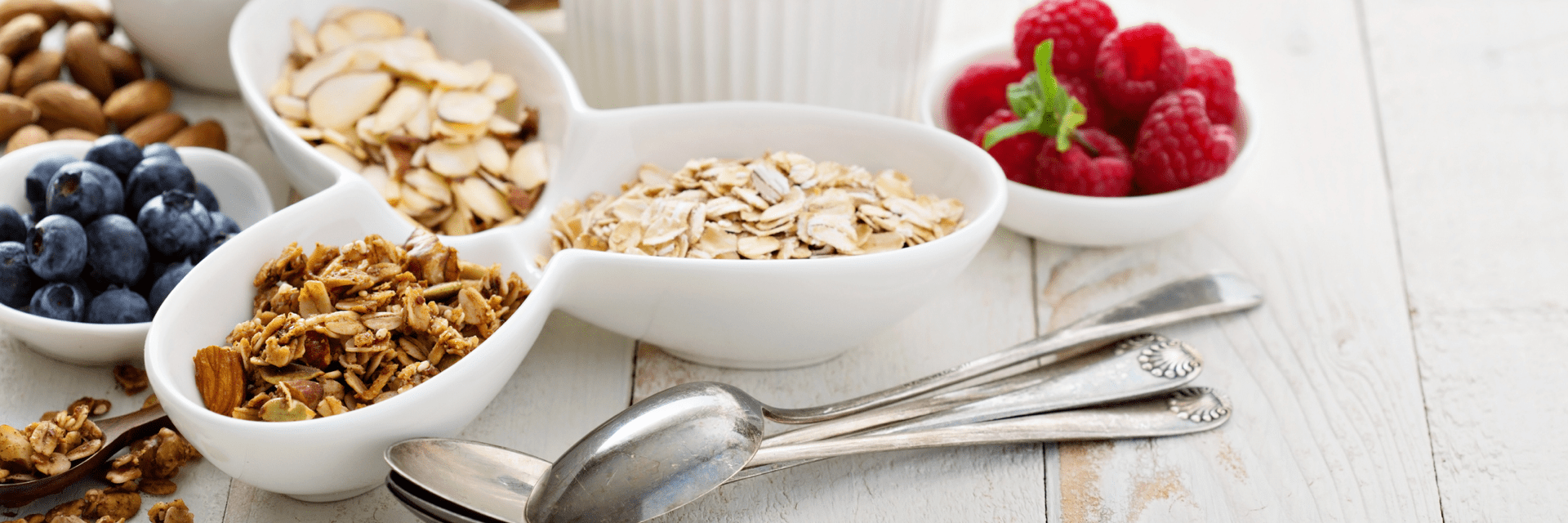As well as a list of ten good sources of fibre, we’ve also got a quick guide to why fibre is important below, and why certain types of fibre are good for cholesterol lowering diets* – so read on.
A list of fibre foods to try
The list of fibre foods below is a mixture of sources of fibre (providing 3g per 100g) and foods that are classified as “high fibre” (over 6g), all chosen because they’re very simple to add to your diet. If you see some foods you don’t usually keep in your home, great! Variety is a great way to keep your diet interesting, so why not give them a try?
- Lentils: Cooked lentils of any colour boast an impressive 11g of fibre per 100g.
- Beans:All beans are a source of fibre, including everyone’s favourite baked beans. Half a tin of baked beans (200g) is 7g of fibre.
- Artichokes: A great vegetable to experiment with, really fun to eat, and 6g of fibre per 100g: a no-brainer.
- Pears: A succulent snack by itself, and surprisingly great in salads, there’s 3.1g of fibre in 100g of pear, while one medium fruit boasts 5.5g.
- Almonds: Brilliant as a snack on-the-go, almonds have an impressive 12.5g of fibre per 100g. That’s about 3.75g per 30g portion.
- Dried figs: Like many dried fruits, figs are good sources of fibre: a 50g portion contains 4g.
- Avocados: Great in a salad or with a Mexican meal, ripe avocadoes are not only creamy and a great source of unsaturated fat, but they also provide 7g of fibre per 100g.
- Bran flakes: Potentially the most underrated breakfast cereal, a 30g bowl of bran flakes delivers 4g of fibre.
- Whole-wheat pasta: Stay away from white pasta (and bread for that matter) and choose to get 5g of fibre in 100g of whole-wheat spaghetti.
- Oat porridge: A wholesome and filling way to start your day, porridge oats provide 12g of fibre in 100g.
So why do we need fibre foods in our diet?
Fibre, also known as roughage, is important for digestive health because it allows the whole process to occur more easily.
The different sources of fibre in food aid digestion in slightly different ways. For example, the fibre in rye contributes to normal bowel function, wheat bran fibre can speed things along in your intestines, and the fibre in oat, wheat, and barley bran helps to increase stool bulk.
If that wasn’t enough, there’s also beta glucan, a type of fibre found in oats and barley. This can actually help to lower cholesterol levels*, so it’s a good idea to add some of these grains to your diet, along with other cholesterol lowering foods.
If you want to know more about fibre foods and how to work them into your lifestyle, click here for our beginner’s guide to fibre.

